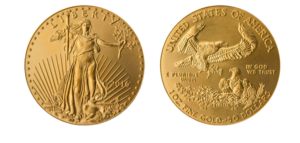Current Geopolitical Risks and How They Influence the Price of Gold
Posted onWhen conflicts arise or economic systems face pressure, investors frequently turn to gold as a store of value. Today, we find ourselves in a period of significant geopolitical risks. From ongoing tensions in Eastern Europe to conflicts in the Middle East and evolving trade relationships between major powers, the global landscape is marked by uncertainty. Many investors question how these developments influence the price of gold in both short and long-term scenarios. This article aims to shed light on the relationship between geopolitical events and gold prices by discussing:
geopolitical risks. From ongoing tensions in Eastern Europe to conflicts in the Middle East and evolving trade relationships between major powers, the global landscape is marked by uncertainty. Many investors question how these developments influence the price of gold in both short and long-term scenarios. This article aims to shed light on the relationship between geopolitical events and gold prices by discussing:
- How geopolitical events affect gold.
- Future geopolitical risks and their potential impact on gold markets.
- Investing in gold through trusted dealers like Blanchard.
Watch this informative video to find out more about how geopolitics affect the price of gold
How Geopolitics Affect the Price of Gold
Throughout human history, financial markets have responded dramatically to world events and political shifts. Investing in gold during crises has been a consistent strategy for wealth preservation when uncertainty strikes. Here, we will explore not only how gold responds to global instability but also why it continues to attract investors during turbulent times. Understanding these dynamics can help investors make more informed decisions about precious metals allocation in their portfolios.
Geopolitical Risks and Their Influence on Markets
Geopolitical risks fundamentally alter investment landscapes across the globe. When nations face political tensions, armed conflicts, or economic sanctions, market participants react swiftly, often triggering volatility across asset classes. These disruptions can manifest as currency devaluations, stock market corrections, or commodity price spikes. Given the interconnected nature of the global economy, regional conflicts rarely remain isolated – trade disruptions, energy price fluctuations, and supply chain interruptions can quickly spread economic impact worldwide. This ripple effect often leads investors to reassess risk exposure.
Throughout history, certain patterns have emerged during geopolitical crises. Equity markets typically experience increased volatility, while government bonds from stable nations attract capital flows. At the same time, commodities – particularly precious metals – see increased demand.
Gold, with its limited supply and universal value recognition, becomes especially attractive when currency stability comes into question. In response to these risks, central banks also adjust their strategies, diversifying reserves through increased gold purchases. This is evident in actions by institutions like the People’s Bank of China, which seek alternatives to dollar-denominated assets.
Why Gold is a Safe Haven Asset
Gold stands apart from most investment assets due to its enduring ability to maintain value during turbulent periods. Among safe haven assets, gold has demonstrated remarkable resilience through centuries of economic and political upheaval. Unlike currencies or securities, gold cannot be devalued through government policy decisions or corporate failures.
Several key attributes explain gold’s safe haven status. First, gold has intrinsic value independent of any issuing authority. Second, it offers portfolio diversification, typically moving inversely to stocks during market stress. Third, gold maintains high liquidity even during crises, allowing investors to convert holdings to cash when other markets freeze.
Gold’s price history confirms these protective qualities. During the 2008 financial crisis, gold appreciated approximately 25% while equity markets collapsed. Similarly, when the COVID-19 pandemic struck in 2020, stimulus measures and economic uncertainty pushed gold to record highs above $2,000 per ounce. Recent market events continue to reinforce gold as a safe haven, with prices climbing above $3,000 in early 2025 as U.S. technology stocks tumbled amid Chinese AI competition.
Geopolitical events consistently trigger gold price movements. The 1973 oil crisis saw gold prices triple. The 2014 Crimea annexation drove a 14% increase in gold prices. More recent conflicts in Eastern Europe and the Middle East have also produced notable, if temporary, price spikes.
Central banks recognize these properties, increasing their gold reserves substantially in recent years as a hedge against both geopolitical uncertainty and potential dollar depreciation.
Historical Trends: How Past Geopolitical Events Moved Gold Prices
Examining historical gold price trends reveals consistent patterns when major geopolitical events unfold. These patterns provide valuable insights into how gold might respond to future crises, though the magnitude and duration of price movements have varied considerably.
The 1979 Soviet invasion of Afghanistan contributed to gold prices rising sharply, culminating in a peak of $850 per ounce in January 1980 – a 66% increase over previous months. Similarly, when Iraq invaded Kuwait in 1990, gold jumped 15% within two months. The September 11 attacks in 2001 prompted a swift 6% price increase in the immediate aftermath.
Nevertheless, not all geopolitical events impact gold equally. In the lead-up to the 2003 Iraq War, gold prices rose approximately 4% in the month before the conflict, peaking near $385 per ounce. However, once military operations began, gold quickly declined by over 15%, demonstrating the “buy the rumor, sell the news” phenomenon that occasionally characterizes gold markets.
More recently, conflicts in Ukraine initially drove significant gold appreciation, with prices rising about 10% due to geopolitical factors. However, these gains were limited as market participants adjusted their expectations.
The data consistently shows that while geopolitical events frequently trigger immediate gold price increases, the sustainability of these gains depends heavily on broader economic conditions and monetary policy. Particularly notable is how Federal Reserve interest rate decisions often determine whether conflict-driven gold rallies persist or fade, with higher rates typically constraining long-term price appreciation.
Predictions: How Future Geopolitical Risks Might Shape Gold Markets
Forecasting market trends requires analyzing both established patterns and emerging global risks. Experts generally agree that several developing situations merit close attention when it comes to developing gold investment strategies in the coming years.
The evolving relationship between major powers, particularly the United States and China, represents a significant variable. Economic competition, technology restrictions, and potential Taiwan-related tensions could all trigger market volatility favorable to gold. Similarly, ongoing conflicts in Eastern Europe and the Middle East may periodically influence prices, especially if they threaten energy supplies or shipping routes.
However, the Federal Reserve’s monetary policy will likely remain the dominant factor influencing gold market trends. While geopolitical events typically provide short-term price catalysts, interest rate levels determine long-term price sustainability. Analysts suggest watching for signs of rate reductions, which would likely provide substantial support for gold prices.
Central bank purchasing behavior represents another critical indicator. If institutions continue diversifying reserves away from the U.S. dollar, as seen with China’s recent acquisitions, this consistent demand could establish higher price floors for gold.
Investors should monitor inflation trends particularly closely, as real, inflation-adjusted interest rates historically show the strongest correlation with gold prices. Additionally, they should watch for signs of market stress in traditional investments, which often precede capital flows toward gold as a protective mechanism against broader instability.
Conclusion
The interplay between geopolitical risks and gold prices presents valuable insights for investors navigating uncertain markets. While short-term price fluctuations often follow global crises, long-term trends depend on a complex interplay of central bank policies, inflation rates, and international currency dynamics.
Gold as an investment offers unique advantages during turbulent times. Its historical performance demonstrates resilience when traditional assets falter, providing both wealth preservation and potential appreciation opportunities. For those concerned about current market volatility, precious metals allocation can serve as a stabilizing force within diversified portfolios.
Those interested in investing in gold can visit Blanchard’s gold purchasing page to explore a selection of investment-grade coins and bars, with options suitable for every budget and strategy. The company’s expert advisors can help select the right products to meet specific financial goals and risk tolerance. Investors should also regularly monitor the price of gold today to make informed timing decisions.
FAQ Section
1. How do geopolitical risks affect gold prices?
Geopolitical risks typically drive the price of gold higher as investors seek safety amid uncertainty. When conflicts, trade disputes, or political instability threaten financial markets, gold often experiences increased demand. This relationship has been demonstrated repeatedly throughout history, from the Cold War era to present-day tensions. However, the magnitude and duration of price increases depend on multiple factors, including the severity of the crisis, market expectations, and prevailing monetary conditions.
2. Why is gold considered a safe-haven asset?
Investors have long valued gold as a safe haven because it maintains value independent of government stability or corporate performance. Unlike paper currencies, gold cannot be devalued through inflation or monetary policy. It has a negative correlation with most traditional investments during market stress, providing crucial portfolio diversification when it is most needed.
3. Can gold prices drop despite geopolitical tensions?
Yes, the price of gold today can decline even during geopolitical crises if other market factors exert stronger downward pressure. For instance, rising interest rates can make non-yielding assets like gold less attractive compared to income-producing investments. Strong dollar performance also typically weighs on gold prices. Moreover, when investors need liquidity during market panics, they sometimes sell gold holdings to cover losses elsewhere.
4. How does inflation impact gold prices?
Historical gold price trends show a generally positive correlation with inflation, particularly during periods of elevated price growth. Gold’s strongest performance typically occurs when real interest rates turn negative, eroding the purchasing power of cash and bonds. However, the relationship isn’t perfectly linear. During periods of moderate inflation with high interest rates, gold can struggle as income-producing assets become more attractive. The key metric for investors to watch is real yields on government bonds, which historically show a stronger correlation with gold than headline inflation figures alone.
5. Where can I buy gold as an investment?
When it comes to buying quality precious metals, working with established dealers with strong industry reputations and transparent pricing structures is paramount. Blanchard offers investment-grade gold coins and bars that meet exacting standards for purity and authenticity, backed by a company with over 40 years of experience in the precious metals industry. For those seeking gold as an investment, contacting Blanchard is an excellent first step toward building a precious metals portfolio. Blanchard’s team of experts can help determine the most appropriate products based on investment goals, budget, and risk tolerance, along with secure storage solutions and liquidation assistance when the time comes to sell.
Want to read more? Subscribe to the Blanchard Newsletter and get our tales from the vault, our favorite stories from around the world, and the latest tangible assets news delivered to your inbox weekly.







